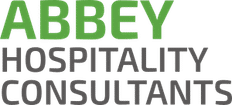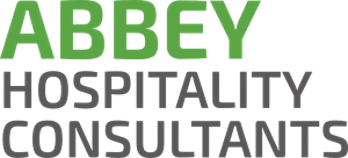COVID-19 RESTAURANT RESOURCES
Until things change, your sole revenue generator is through off-premises dining and delivery, you will want to pivot your strategy. Before that, though, take stock of the resources you have on hand:
- Restaurant inventory management is the process of analyzing your supply, economizing on it, and using this data to make informed purchases. Optimizing your inventory now is more important than ever.
- Knowing how to rotate or prioritize your food that will expire first, (“first-in, first-out”) will help during times of economic shortage.
- The practice also enables waste reduction, which is another effective form of revenue generation in itself. Restaurant Waste can cost an operator significant amounts of money week to week, so “plugging that hole” will help to roll forward.
- Restaurant bin management optimizes your kitchen back-of-house during a rush, keeping you on top of bulk items before they expire.
YOUR TEAM
Your Team is vital to keeping the engine running, especially if you find yourself shifting your energies or roles. With fewer people dining out, you will likely have a shift in staffing needs, and team members are likely to be concerned. There are ways to take care of them:
- Turnover and anxiety abound! The hospitality industry is fraught with this anyway, and the pandemic is only making it worse. Focus on retaining the team you have.
- Remember clear communication, and using facts and figures, helps to create a “solutions-based” plan.
- Make clear that if anyone feels unwell, they should not come in.
- A coherent restaurant team member handbook can help you navigate here. If you do not have one in place, now is an excellent time to create one that is useful and pertinent.
- Establish an on-call program, so your team can get extra shifts if others are sick.
- You might find yourself having to hire more restaurant team members.
- Efficient team members onboarding helps new members train up to your restaurant’s quality standards quickly.
- Additional kitchen technology, like restaurant recipe viewers, which offer graphical displays of dishes and recipes, a virtual safety net for rookie and veteran kitchen team.
YOUR INFORMATION
As COVID-19 makes headlines, reduced travel, and government calls for social distancing and banning large gatherings, are hitting restaurants hard.
- If you are in a city with forced shutdowns, make sure to broadcast your hours of operation by making the info available on your restaurant’s website or social media profiles.
- If you are in a city with mandatory capacity or large gathering restrictions, reconfigure your availability and adjust your floor plan to reflect changes.
- Stay aware of regulatory changes by contacting your local government business bureau.
- Make sure to vet the quality of the news. A good rule of thumb is to seek official sources:
- World Health Organization (WHO)
- Centers for Disease Control and Prevention
- Restaurant News Roundups
- Crisis communication is integral in reassuring your restaurant staff during hard times while guiding them during a pivot in business models.
CONNECT WITH YOUR GUESTS
Create the Channels
Diner Behaviors were changing before the pandemic — and they have only changed more now. You will want to make sure you are reaching all your guests so that you can swiftly communicate information to them.
- The best time to have created a restaurant social media profile was yesterday. The second best time is right now! If you do not have a social media profile for your restaurant, change that immediately!
- How to Create a Restaurant Facebook Profile
- Instagram & Restaurants: Is Your Restaurant Insta-Ready?
- How to Create a Restaurant Twitter Account
- Creating and maintaining a restaurant website is also useful as you can use it to keep guests updated on how you are responding to COVID-19. If you have got to choose between one or the other, though, make the social media profiles first.
- Using targeted emails to communicate with your guests can also keep you on their radar.
USE THESE CHANNELS
It is up to you which ones you use, and in what combination, but you can use these channels to:
- Ensure your guests are aware you are open for business. You might also directly outline ways they can support your restaurant.
- Inform guests of the precautions you are taking, in your restaurant, and with their food.
- Indicate any changes in your hours or any temporary shutdowns.
- Monitor guest feedback and respond to their concerns.
- Re-engage regulars and attract new guests with exclusive offers. You can use this time to bulk up a loyalty rewards program as a way to incentivize your regular guests.
PIVOTING YOUR RESTAURANT BUSINESS
Off-Premises Strategies
Currently, off-premises dining (takeout, delivery, or catering) is every restaurant’s sole means of revenue. Knowing how to create the most effective off-premises dining strategy will help weather the storm.
- Off-premises dining is a broad term that covers many different facets, from curbside pickup to third party delivery. That means, no matter your size or segment, you can get started with off-premise delivery on your own terms. It is much easier than you think!
- If you choose to offer delivery services, you do not need to be extravagant. A simplified delivery service means using technology and having a solid plan in place.
- Decide if you can handle the service in-house, or if you should outsource it to a third party.
- Some restaurants have pivoted towards other off-premise revenue streams like alcohol delivery and even grocery services.
- Menu engineering, or creating a simplified lunch menu, can also help you specialize for the leaner months.
MAKE DECISIONS WITH DATA
Data helps you understand, with exactness, how your restaurant is performing. The numbers do not lie! In a time when we are all watching the margins and trying to identify obstacles and bottlenecks in our operations, data can show you right where to look.
- Understanding what types of restaurant data there are to track and how your technology can record it might seem overwhelming, but we’ve created this beginner’s guide.
- It doesn’t matter what size or segment you’re in; there’s useful data for you.
- One of the key elements of restaurant data from which many other data derives is the “speed of service.” This metric means how quickly you are taking an order, from it’s very origin to the finished meal.
- There are numerous other types of smart restaurant data you can measure though.
- Restaurant data’s real benefit is that it allows you to perform restaurant analytics. In other words, it can create a report for you that you can then read and use to identify areas of improvement. For example, if you see your speed of service numbers showing considerably on certain days, you might consider a staffing change to counteract it.
KEEP IT CLEAN
The more you can do to go above and beyond to protect your guests and reassure them about your hygiene efforts, the better and safer you will be. It’s important to remember that this isn’t just a temporary shift in our consciousness, but an overhaul in the way we think about restaurant food safety, and the world at large. Our minds will be forever in-tune with the surfaces we touch.
- Consult premier health sources when it comes to ideal ways to:
- Wash hands
- Wash dishes
- Increase sanitation by keeping hand sanitizer at the entrance for your team
- Clean counters, handles, and bathrooms more frequently and thoroughly.
- In some guest management software, such as front-of-house software, you can customize specific alerts or server rotations to recur and prompt team members to wipe counters or wash hands.
- When walk-in business resumes, change your floor plan or change table types to create more distance between diners (the CDC recommends at least 6 feet).
MAINTAINING YOUR MIND
Restaurant work is already stressful without a global pandemic. Though the risks associated with COVID-19 are real, the unseen detriments of stress, anxiety, and burnout will not only diminish the quality of your restaurant service but of your life overall! “A broken jug can’t pour” goes the saying, so ensure you are taking care of yourself, and in turn, you can take care of your team members and guests. Remember that we will swing back!
- Mindfulness is the process of taking time to “recenter” yourself. It is a basic principle that one need not be an experienced meditator to use. We wrote about applying mindfulness to the restaurant work environment and feel it’s more than appropriate now.
- Burnout might seem obvious, but often by the time you are feeling it, it is already too late. Learning how to identify the symptoms will help you forecast and avoid restaurant team members burnout.
- While we’re all thinking about germs, bacteria, and the way they impact us, remember too that a toxic restaurant work environment can be deadly as well. Despite the air of anxiety surrounding everything, you can lead by example and ensure you eliminate any and all toxic behavior in your restaurant.
- Circle back to your mission statement. You have an opportunity to get back to the root, to the very essence of why you are in this business in the first place. If you don’t have an existing mission statement, now might be the ideal time to create one.
- Things will slow down. You can use the time to do a bit of self-reflecting as it relates to your restaurant. You can identify the traits you want to exemplify as a general manager or even ask your team members for their feedback.
- You can also turn this outwards to performing guest surveys





